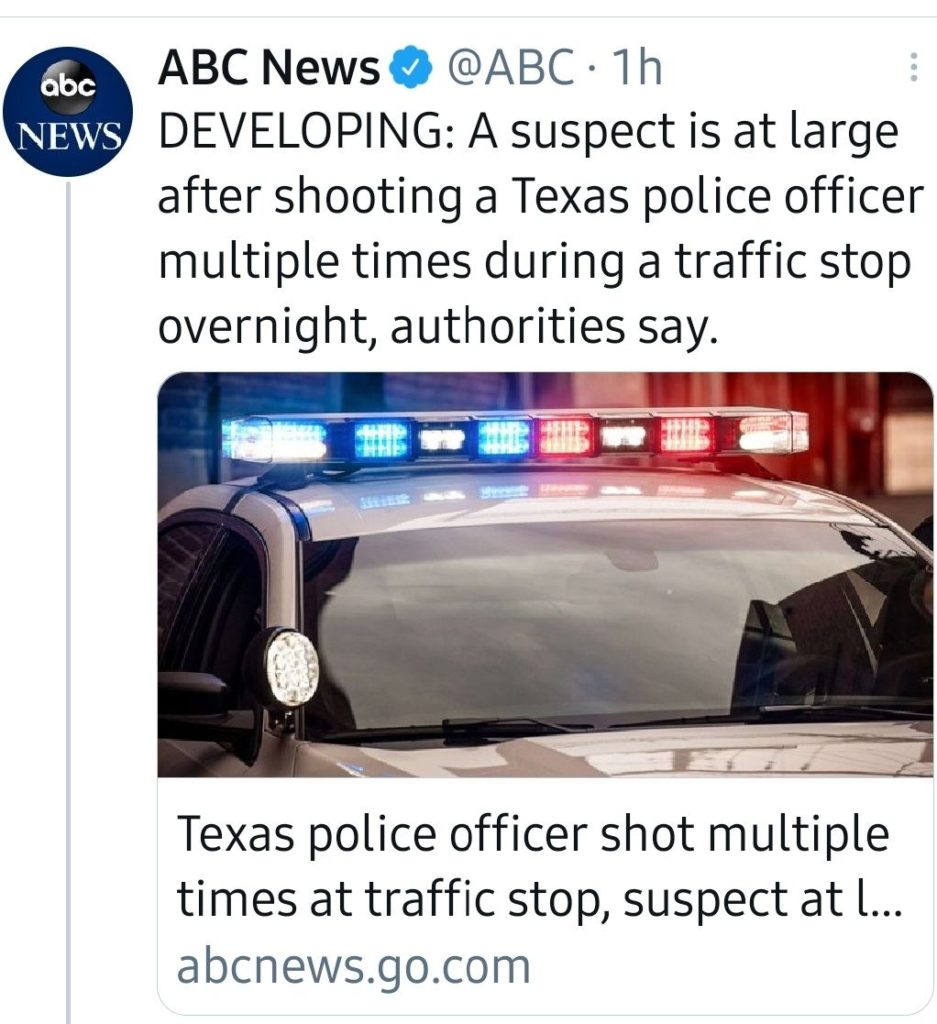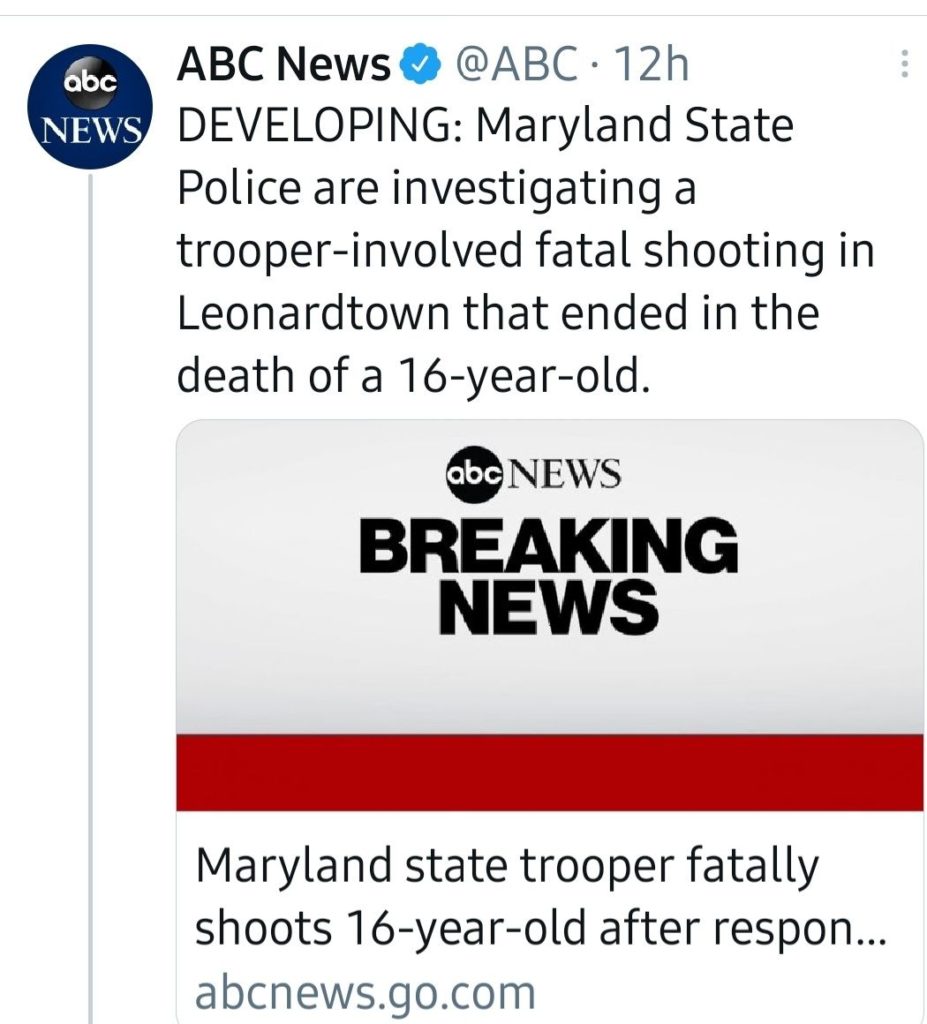I found a really stark example this week of how the mainstream media continues to misreport about police killings, or as they too-often call them, “officer-involved shootings.”
I’m not the first one to point out that this is a problem. Experts on journalism discourage the use of vague language like “officer-involved shootings.” So why does the media persist in it?
Again, this happens all the time. I’m only calling out ABC here because it’s so blatant: two contrasting examples from the same 24-hour period. Here’s the first tweet:

If we go back to the journalism basics, an article needs to answer the 5 W’s and and H formula. Ideally our headlines should answer as many of them as possible, too. This tweet is from April 14, based on an article dated that day. We might not know who is responsible, exactly (a suspect at large) but we know clearly what happened: Somebody shot a Texas police officer then went on the run.
But the previous night, we see this contrasting example from ABC and here comes our old “friend,” the officer-involved shooting …

The article itself has a serviceable headline: “Maryland state trooper fatally shoots 16-year-old after responding to reports of an armed man.”
I didn’t keep track of this article from start to finish. It’s possible they updated the headline as more information came in … or after they got dragged on Twitter. But there’s no excuse for this terrible tweet from @ABC.
The mystery of officer-involved shootings: How was the officer involved?
Officer-involved shooting is weasel-language. Rather than answer the 5Ws, it deliberately obfuscates the answer. This kind of language perpetuates and upholds a culture where police are above the rest of us, not subject to the same rules and immune from criticism. We’re not even allowed to say cops kill when they kill.
And the only reason to do this is to protect cops’ feelings. It’s pure copaganda. It’s such blatant propaganda, and so blatantly harmful that the Associated Press actually bans the practice in their style guide:
That tweet is from August 2020, but the basic advice goes back earlier: don’t do this. Say what happened, to whom and who did it.
The real mystery isn’t what happened. It’s why the media keeps doing this, even after both journalism experts and the public condemn it. I think the reason is they’re afraid of offending police and police unions. So afraid, they’d rather hurt the public’s trust than report the news.
Cops kill, so why can’t we say it?
When a cop makes up a story about getting insulted at a Starbucks, it becomes national news. After police killed an employee at Trader Joe’s, Trader Joe’s donated money to the police.
We’re so afraid of even slightly offending these unaccountable killers among us that we can’t even say that they kill. Here’s a startling recent example, this time from The New York Times.
I support abolishing and replacing the police with new systems that actually protect communities. Even if you support cops, you shouldn’t need to fill your language with euphemisms. Cops kill. It’s just a fact.
People use euphemisms because they’re afraid of directly stating what’s happening, because the actual reality’s become taboo. I’m not supposed to point out that police enforce white supremacy, capitalism, property and patriarchy. Politicians of every party, Hollywood, and the media vigorously enforce the collective fiction that “cops keep people safe.”
I’ve noticed that Twitter users now routinely tweet “how was the officer involved?” at accounts that commit this particular sin. It warms my cynical heart, and I’ve participated myself at times.
Reality is still there, just slightly hidden behind the officer-involved shootings. People can still see it, especially members of the marginalized groups cops victimize most often. People know, and that’s why they take the streets when police kill.
‘Officer-Involved Shootings: How Was The Officer Involved?’: Published under a Creative Commons license
 Officer-Involved Shootings: How Was The Officer Involved? by Kit O’Connell is licensed under a Creative Commons Attribution 4.0 International License.
Officer-Involved Shootings: How Was The Officer Involved? by Kit O’Connell is licensed under a Creative Commons Attribution 4.0 International License.Based on a work at https://kitoconnell.com/2021/04/14/officer-involved-shootings-abc/.
Feel free to share and republish this as long as you give me credit (and a link back whenever possible).
